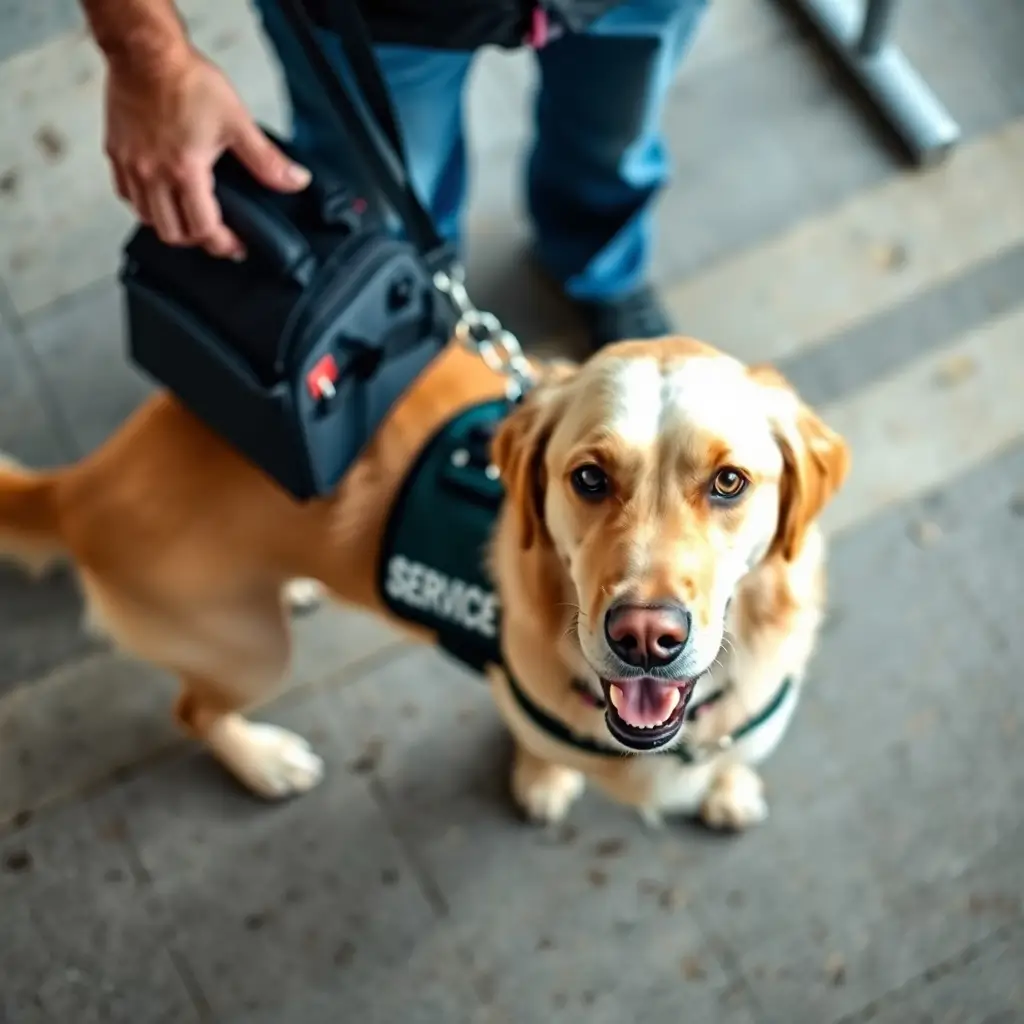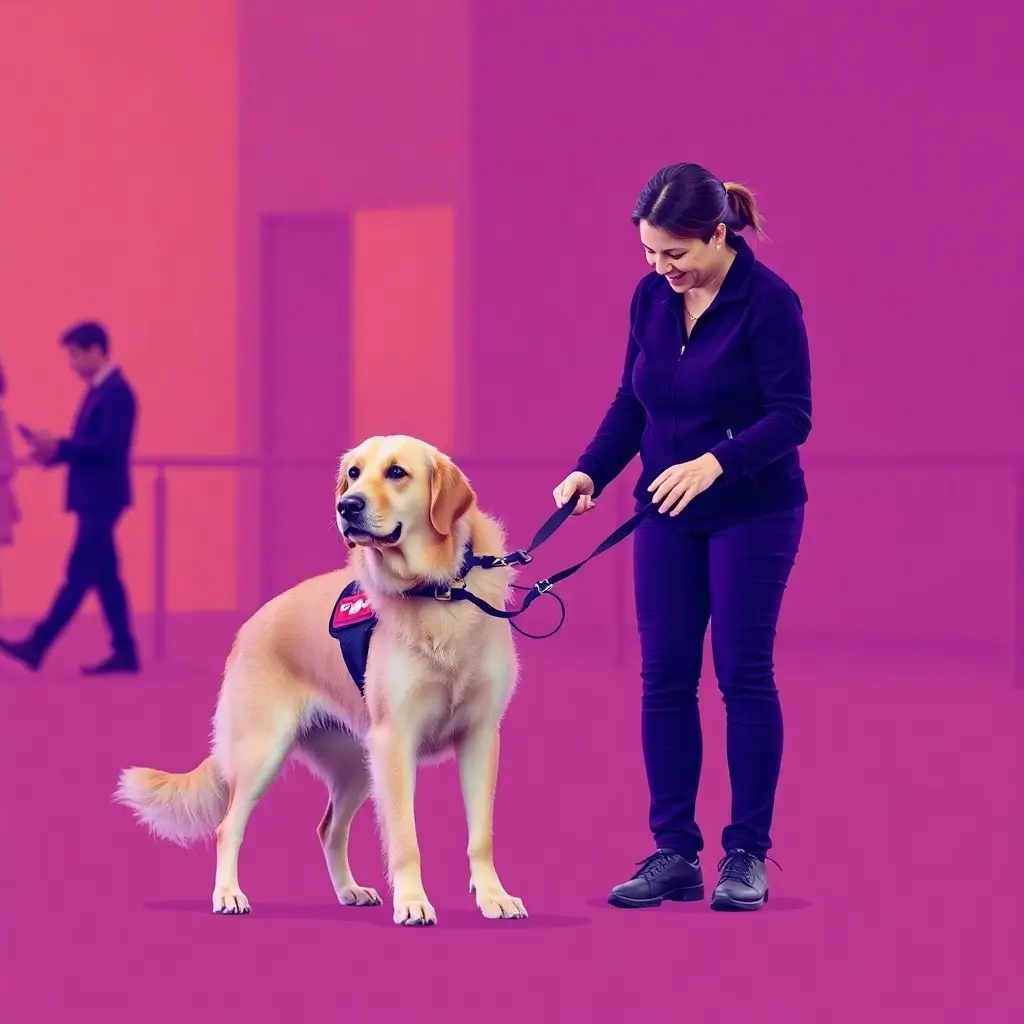Introduction
Service dogs play a crucial role in assisting individuals with disabilities, providing essential support, and improving their quality of life. If you’re looking for reliable service dog training, it’s important to follow a structured and compassionate approach. At Whizpet, extensive research has been conducted to understand how to train my dog to be a service dog using the best techniques, legal requirements, and specialized training methods.
Whizpet’s research highlights the importance of positive reinforcement, specialized task training, and consistency in service dog training. Whether it’s guiding individuals with visual impairments, alerting those with medical conditions, or providing emotional support for mental health challenges, the right training program makes all the difference.
In this guide, we’ll walk you through the complete service dog training process, covering essential steps, legal requirements, and training techniques for different disabilities, including anxiety, PTSD, diabetes, and autism. If you’ve ever wondered how to train my dog to be a service dog, this expert-backed guide will provide the insights you need to help your dog become a reliable and supportive companion.
What Is a Service Dog?
A service dog is a specially trained canine that assists individuals with disabilities by performing specific tasks tailored to their needs. Unlike emotional support animals (ESAs) or therapy dogs, service dogs undergo extensive service dog training to carry out essential duties such as guiding the visually impaired, detecting medical conditions, and providing psychiatric support.
The service dog training process focuses on developing skills that enable these dogs to perform crucial tasks with precision and reliability. For individuals with mobility impairments, service dogs can retrieve objects, open doors, or even help with balance. Those with medical conditions such as diabetes or epilepsy rely on service dogs to detect blood sugar fluctuations or alert them to seizures before they occur. Additionally, people suffering from anxiety, PTSD, or autism benefit from service dog training that equips the dog to provide deep pressure therapy, interrupt panic attacks, and offer emotional grounding.
Training a service dog demands commitment, patience, and a well-structured plan.Professional trainers follow proven methods that emphasize positive reinforcement, consistency, and specialized task training. While some individuals seek professional programs, others explore options like how to train my dog to be a service dog for anxiety and depression through online courses or guided training sessions.
Beyond training, service dogs must meet legal requirements to be recognized as working animals. In the U.S., the Americans with Disabilities Act (ADA) grants public access rights to service dogs, ensuring they can accompany their handlers in public spaces. Proper service dog training ensures that these animals remain well-behaved, focused, and capable of performing their duties in various environments.
By understanding the role and training of service dogs, individuals can make informed decisions about their canine companion’s future as a reliable and supportive service animal.

Legal Requirements for Service Dogs
In the U.S., the Americans with Disabilities Act (ADA) defines a service dog as a specially trained canine that performs tasks directly related to an individual’s disability. These dogs play a vital role in assisting people with physical, medical, and psychiatric conditions, making service dog training an essential process for ensuring their effectiveness and legal recognition.
Key Legal Criteria for Service Dogs
To qualify as a service dog, the following legal requirements must be met:
- Task-Specific Training: The dog must undergo specialized service dog training to assist with specific disability-related tasks, such as guiding visually impaired individuals, alerting those with medical conditions, or providing emotional support for individuals with PTSD, autism, or severe anxiety.
- Under the ADA, properly trained service dogs are allowed to accompany their handlers in all public areas, including restaurants, hotels, workplaces, and public transportation. Businesses and establishments cannot refuse entry to a service dog, even if they have a “no pets” policy.
- No Certification Required: While many people ask, “How to get my dog certified as a service dog for anxiety?”It is important to understand that service dogs in the U.S. are not legally required to have certification or registration.However, proof of proper service dog training can be beneficial in certain situations, such as housing or airline travel accommodations.
Proper service dog training ensures these animals remain well-mannered and focused on their tasks, allowing them to provide essential support without causing disruptions in public spaces. Understanding these legal requirements helps individuals confidently train and work with their service dogs while ensuring full compliance with U.S. laws.
Step-by-Step Service Dog Training Plan
Step 1: Assess Your Dog’s Suitability
Not all dogs are suited for service work. Your dog should possess:
- A calm and friendly temperament
- Strong trainability and intelligence
- A stable, non-aggressive nature
- Good health and endurance
Step 2: Basic Obedience Training
Before beginning specialized service dog training, your dog must first master basic obedience.Key commands include:
- Sit
- Stay
- Come
- Heel
- Leave it
Step 3: Socialization
A service dog needs to be at ease in different environments.Expose your dog to:
- Crowds and public spaces
- Different sounds and distractions
- Other animals and people
Step 4: Task-Specific Training
Depending on the disability, service dogs learn specific tasks, such as:
- For Anxiety & PTSD:
- Deep pressure therapy (DPT)
- Alerting during panic attacks
- Creating personal space in crowds
- For Diabetes:
- Detecting low blood sugar levels
- Retrieving medication
- For Autism & ADHD:
- Interrupting self-harming behaviors
- Guiding through sensory overload situations
Step 5: Public Access Training
A service dog must behave impeccably in public. Training includes:
- Ignoring distractions
- Remaining calm in different settings
- Navigating obstacles smoothly
Step 6: Certification & Legal Considerations
While the ADA doesn’t require official certification, some organizations offer voluntary assessments to validate training. This can help in gaining public acceptance and access rights.

Frequently Asked Questions (FAQs) About Service Dog Training
1. How long does Service dog training take?
The service dog training process can take anywhere from 6 months to 2 years, depending on the dog’s breed, temperament, and the complexity of tasks required. Consistent training, reinforcement, and socialization are key factors in ensuring the dog meets service standards.
2. How much does it cost to train my dog to be a service dog?
Professional service dog training programs can cost between $5,000 and $30,000, depending on the level of training and specific tasks required. However, self-training with the right resources and guidance can significantly lower costs while strengthening the bond between you and your dog.
3. Can I train my own service dog for free?
Yes, self-training is possible, but it requires dedication, patience, and structured service dog training methods. Owners must ensure their dogs learn essential skills, public behavior etiquette, and task-specific commands to qualify as reliable service animals.
4. How to get my dog certified as a service dog for anxiety?
While certification is not legally required, some organizations, such as Assistance Dogs International (ADI), offer voluntary evaluations to assess a dog’s training and behavior. Completing a reputable service dog training program can help validate your dog’s skills and credibility.
5. What disabilities qualify for a service dog?
Several disabilities may qualify, including mobility impairments, PTSD, autism, diabetes, epilepsy, and psychiatric conditions. Proper service dog training ensures the dog can effectively assist in managing these conditions through specialized task performance.
Conclusion
Training a service dog requires patience, structure, and commitment. Whether you need to know how to train my dog to be a service dog for anxiety, PTSD, diabetes, or autism, following a structured training plan ensures success. With proper obedience, socialization, and task-specific training, your dog can become a reliable service companion, enhancing your quality of life.
Call to Action
Are you ready to start your service dog training journey? Follow our step-by-step guide, and share your experiences in the comments below!
Related blog: For more detailed information about pet care

